Hawkwind - Road To Utopia (2018) [CD Rip]
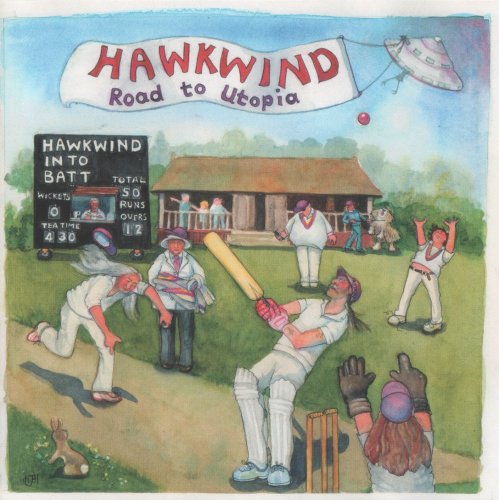
Artist: Hawkwind
Title: Road To Utopia
Year Of Release: 2018
Label: Cherry Red Records
Genre: Prog Rock
Quality: FLAC (tracks + .cue, log, artwork)
Total Time: 43:31
Total Size: 285 MB
WebSite: Album Preview
Tracklist:Title: Road To Utopia
Year Of Release: 2018
Label: Cherry Red Records
Genre: Prog Rock
Quality: FLAC (tracks + .cue, log, artwork)
Total Time: 43:31
Total Size: 285 MB
WebSite: Album Preview
01. Quark, Strangeness and Charm
02. The Watcher
03. We Took the Wrong Step Years Ago
04. Flying Doctor
05. Psychic Power
06. Hymn to the Sun
07. The Age of the Micro Man
08. Intro the Night
09. Down Through the Night
Any sci-fi fan with a long memory probably remembers those 1970s' DAW paperback editions of Michael Moorcock's sword-and-sorcery novels, with their images of heavily armored, very muscular warriors carrying large swords and standing against eerie landscapes and starscapes. Take that imagery, throw in some names and terminology seemingly lifted from the Marvel Comics of the era (and particle physics articles of the period), and translate it into loud but articulate hard rock music. That's more or less what Hawkwind are about. One of England's longest-lasting hard rock bands, Hawkwind were formed during the late '60s, just as art rock was coming into its own. They combined bold guitar, synthesizer, and Mellotron sounds, creating music that crossed paths with Chuck Berry and the Moody Blues without sounding like either of them. At their best, Hawkwind's early records sounded like the Beatles of "Yer Blues" combined with the Cream of "I Feel Free." The introduction of lyrics steeped in science fiction and drug effects on their second album helped define Hawkwind and separate them from the competition -- in some ways they were like Pink Floyd with more of a rock & roll beat and a vengeance. They've never charted a record anywhere near the same heights as the Floyd, but it's a sign of the dedication of the fans they do have that the group has dozens of albums available, including archival releases of decades-old live shows and multiple compilations, and they're the pioneers of what fans have come to call "Space Rock."
Hawkwind's history has been marked by a series of confusing lineup changes, as members began an almost revolving-door relationship with the band virtually from the outset. The seeds of the group were planted when guitarist/singer Dave Brock and guitarist Mick Slattery of the group Famous Cure, which was playing a gig in Holland in 1969, met saxman/flutist/singer Nik Turner, a member of Mobile Freakout, on the same tour. Once back in England, Brock, Slattery, and Turner hooked up again and, adding John Harrison on bass, Terry Ollis on drums, and DikMik Davies on electronic keyboards, called themselves Group X, later changed to Hawkwind Zoo, and finally to Hawkwind. They secured a contract with United Artists/Liberty Records in England. Before the group recorded, however, Huw Lloyd Langton replaced Mick Slattery on guitar.
The fledgling band hooked up with two Pretty Things alumni -- drummer Viv Prince, who occasionally joined Hawkwind on-stage, and bassist (and onetime Rolling Stones member) Dick Taylor, who was recruited as a producer but played on their early records. Their first single, "Hurry on Sundown" (aka "Hurry on a Sundown") b/w "Mirror of Illusion," was released in July of 1970, just in time for Harrison to exit the lineup, to be replaced by bassist Thomas Crimble. Their first album, Hawkwind, was released to little public notice in August, but that same month the group made a modest splash by playing outside the fences of the Isle of Wight Festival.
The following month, Huw Lloyd Langton quit the band along with Thomas Crimble -- the replacement bassist, ex-Amon Düül member Dave Anderson, joined in May of 1971, the same month that DikMik Davies quit, to be replaced on keyboards by Del Dettmar. In June of that year, two more new members came aboard -- poet Robert Calvert, who became lead vocalist, and a dancer named Stacia, who began appearing with the group on-stage. Meanwhile, the band also hooked up with artist Barney Bubbles, who gave Hawkwind a new image, redesigning their stage decor and equipment decoration, and devising distinctive new album graphics.
Ex-bassist Crimble helped arrange for the group's performance at the Glastonbury Fayre in Somerset in June of 1971, which gave Hawkwind fresh exposure and brought them to the attention of writer Michael Moorcock, who was entering a vastly popular phase in his career as the author of many science fiction and fantasy novels. Moorcock helped organize some of their performances, as well as occasionally serving as a substitute for Calvert.
Equally important, in August of 1971, Dave Anderson departed the group, and DikMik Davies returned to the lineup to join Dettmar on keyboards, bringing in Anderson's replacement -- his friend Lemmy (born Ian Kilmister), an ex-roadie for Jimi Hendrix and a member of the rowdy mid-'60s Blackpool rock & roll band the Rocking Vicars. Lemmy had joined the group just in time to participate on the recording of the band's second album, In Search of Space.
Released in October of 1971, it proved a defining work, carving out new frontiers of metal, drug, and science-fiction-laced music, including one major classic song, "Masters of the Universe," which became one of the group's most popular concert numbers and turned up on numerous studio and live compilations. More lineup changes followed, as Simon King succeeded Terry Ollis on the drums in January of 1972. The group played the Greasy Truckers Party -- a showcase of underground and alternative music and politics -- at the Roundhouse in London the next month, parts of which surfaced on a pair of subsequent albums. All of these lineup changes and career steps had been compromised by a string of annoying bad luck and thefts of equipment, which were serious enough to threaten their solvency. Coupled with Bob Calvert's shaky health, the result of a nervous breakdown, Hawkwind went into 1972 on very uncertain footing.
The group's early sound, characterized by their singles up through that point, was essentially hard rock with progressive trappings. They slotted in perfectly with the collegiate and drug audiences, putting on the kind of show that acts like King Crimson and ELP were known for, but with more of a pure rock & roll base (not surprising, considering Lemmy's background). Their commercial breakthrough took place when a version of the hard-driving rocker "Silver Machine," sung by Lemmy, made it to number three on the British charts in August of 1972. They were unable to maintain this unexpected flash of mass success, particularly when their follow-up single, "Urban Guerrilla," a surprisingly melodic rocker with lots of crunchy guitar at the core of multiple layers of metallic sound, was withdrawn amid a series of terrorist attacks in London, even though it had reached the British Top 40 and seemed poised to mimic "Silver Machine"'s success.
The British tour that followed "Silver Machine," their first major circuit of the country, gave them more concert exposure, and their third album, Doremi Fasol Latido, released in November of 1972, got to the number 14 spot on the British charts. This album codified the group's science fiction orientation, presenting an elaborate mythology about the history of the universe (or some universe) into which the group and its music were woven. By this time, they had a major reputation as a live act, and rose to the occasion with an elaborate concert show called the Space Ritual. Their fourth album, Space Ritual, was a double-disc set recorded in concert and issued in June of 1973; it got to number nine.
By the time of their next album, In the Hall of the Mountain Grill in 1974, Bob Calvert had departed to work on a planned solo project (Captain Lockheed & the Starfighters), and violinist and keyboard player Simon House had joined the group. This was the heyday of progressive bands such as Yes, ELP, and Genesis, and Hawkwind's mix of dense keyboard textures and heavy metal guitar and bass, coupling classical bombast and hard rock, became the sudden recipient of massive international press coverage; though they'd never charted a record in the United States, they became well known to readers of the rock press, and their records were available as imports.
The group toured the United States twice during this era, once in late 1973 and again in the spring of the next year. These tours had their usual share of problems -- the band and its entire entourage were arrested in Indiana for non-payment of taxes -- but it was after the release of their 1975 album, Warrior on the Edge of Time, that a major membership change ensued. They were touring the U.S. behind the release of the album when Lemmy was arrested on drug charges. He was fired from the band and went on to form Motörhead, a successful and influential metal band. His exit also took away a lot of the energy and focus driving the group's sound. There was talk about Hawkwind calling it quits, but they carried on with Lemmy's replacement, Paul Rudolph, and with Bob Calvert back in the lineup. By this time, their chances for a breakthrough in America had been reduced considerably by the chart success of such groups as Kansas and Blue Õyster Cult, both of which melded proletarian rock with progressive sensibilities in just the right portions to appeal to kids on the U.S. side of the Atlantic.
Hawkwind's revamped lineup did release a new album, Astounding Sounds, which performed moderately well, and followed it a year later with Quark Strangeness and Charm (1977), which had a good title song, among other virtues. Hawkwind were still working as a quintet, but by this time their chronic instability was about to reach critical levels: at the end of their 1978 American tour, Calvert quit the band again, and the entire group virtually disbanded. When the smoke cleared, Calvert had put together a direct offshoot group, the Hawklords, and abandoned an entire finished album to record 25 Years On with a lineup that included Brock, Martin Griffiths on drums, Steve Swindells on keyboards, and Harvey Bainbridge on drums. That record made a respectable showing at number 48 on the British charts with a supporting tour, but the new group wasn't much more stable than the old one, with drummer Griffiths gone by December of 1978.
Then Calvert quit (again), while Simon King, who had been a Hawkwind member a couple of years earlier, rejoined on drums, replacing Griffiths. The group was left as a four-piece and resumed the use of the name Hawkwind in January of 1979. Huw Lloyd Langton was back in the lineup by May of 1979, while Tim Blake replaced a departing Swindells. This lineup proved relatively stable and recorded a very successful live album (number 15 in the U.K.), released as part of a new contract with Bronze Records. One big change took place in September of 1980 when Ginger Baker replaced Simon King, although Baker himself only lasted until March of 1981, when he was let go from the band and replaced by "Hawklords" drummer Martin Griffiths. This core lineup cut a string of decent-selling albums through 1984, which were embraced by the heavy metal community and initially propelled into the Top 30 and Top 20 in England, culminating with another live album. By the time of their 1984 album, This Is Hawkwind, Do Not Panic, released under a new contract with Flickknife Records, Turner, Brock, and Langton were back together again.
By this time, the band's '70s recordings were starting to show up in profusion, in competition with their then-current work. Ironically, it was in 1985, just as Hawkwind were starting to compete with their own early history, that they released their most ambitious record of all, Chronicle of the Black Sword. An adaptation of Michael Moorcock's sci-fi novels, the album was also a return to their old style. It was in this same period that Brock, Turner, Langton, Anderson, Crimble, Bainbridge, and Slattery attended the first Hawkwind Convention, held in Manchester -- Turner left soon after, but the remaining members held together for three years, a record for the band.
Bob Calvert, who had quit the band twice at the end of the '70s, died of a heart attack in 1988. Hawkwind were still together, however, and the following year even managed their first American tour since Calvert's first exit from the band. Performance artist Bridget Wishart began singing for the group, becoming Hawkwind's first and only female frontperson. By 1990, their fortunes were on the upswing again, when their sudden embrace of the rave culture on a new album, Space Bandits, gave them a new chart entry and a distinctly younger listenership. Their commercial revival was short-lived, however, and by 1991, they were busying themselves re-recording their classic material. They toured America again in 1992.
They were left as a trio after a falling out among the bandmembers at the end of that tour, and apart from periodic reissues of Hawkwind's classic material, the surviving group achieved a serious following on the underground, drug-driven dance/rave scene in England, ironically returning to a modern version of the band's roots. Subsequent albums featured far more electronics than traditional rock instrumentation. They played various major showcases (including the 12 Hour Technicolor Dream All Nighter at Brixton Academy), as well as benefit performances. Their entire catalog has been reissued on CD by several different labels (Griffin, Cleopatra, One Way, Magnum, etc.), in some cases recompiled and retitled (especially the live recordings), including numerous compilations and archival explorations, all very confusing and numbering in the dozens.
In 1999, Hawkwind celebrated their 30th anniversary with the release of a triple-CD anthology titled Epocheclipse. A reunion concert titled Hawkestra was scheduled to coincide with the release, but was postponed until October 2000. The three-hour set took place at Brixton Academy and included performances by 20 of the group's members. After the concert, the group toured with a core lineup of Brock, drummer Richard Chadwick, vocalist Ron Tree, guitarist Jerry Richards, and bassist Alan Davey, with guest contributions from several other members. Nik Turner also began gathering former Hawkwind members for a separate lineup, referred to as xhawkwind.com, but Brock pursued legal action, and Turner's version became known as Space Ritual.
Official lineups of Hawkwind toured and released live albums, and they organized a festival titled Hawkfest in summer of 2002. A subsequent concert at the Wembley Arena featured guest appearances from Arthur Brown and Lemmy. The studio album Take Me to Your Leader appeared in 2005, including Brown as well as Lene Lovich among its guests. Take Me to Your Future, a DualDisc CD/DVD, followed in 2006. Davey left the band by the end of the year and was replaced by Mr. Dibs. Jon Sevink of the Levellers occasionally began playing violin during Hawkwind gigs during 2009, as the band celebrated its 40th anniversary.
In 2010, British magazine MOJO honored Hawkwind with the Maverick Award at their annual awards ceremony. The group released studio album Blood of the Earth on Eastworld Records, with a lineup including Brock, Dibs, Chadwick, returning keyboard player Tim Blake, and multi-instrumentalist Niall Hone. Following tours of Australia and Europe, the studio album Onward emerged in 2012. Keyboardist Dead Fred joined the group during the album's tour. In November, Brock released the solo album Looking for Love in the Lost Land of Dreams, and Hawkwind Light Orchestra (comprising Brock, Chadwick, and Hone) issued Stellar Variations. In 2013, Cherry Red reissued Warrior on the Edge of Time, and Hawkwind performed the entire album during their Warrior 2013 Tour. Brock received the Lifetime Achievement Award at the Prog Rock Awards held in London that September, and the full-length Spacehawks appeared shortly after.
In February of 2014, Hawkwind performed Space Ritual at a benefit concert titled Rock 4 Rescue. English actor Brian Blessed appeared on the song "Sonic Attack," and a studio recording was subsequently released as a single. The concert was eventually released as a CD/DVD set titled Space Ritual Live in March of 2015. A month later, Hawkwind made their first ever visit to Japan, performing two sold-out concerts in Tokyo. Brock issued the solo album Brockworld in November. In April of 2016, Hawkwind's The Machine Stops, a studio album based on the similarly titled sci-fi short story by E.M. Forster, was released by Cherry Red. ~ Bruce Eder
Hawkwind's history has been marked by a series of confusing lineup changes, as members began an almost revolving-door relationship with the band virtually from the outset. The seeds of the group were planted when guitarist/singer Dave Brock and guitarist Mick Slattery of the group Famous Cure, which was playing a gig in Holland in 1969, met saxman/flutist/singer Nik Turner, a member of Mobile Freakout, on the same tour. Once back in England, Brock, Slattery, and Turner hooked up again and, adding John Harrison on bass, Terry Ollis on drums, and DikMik Davies on electronic keyboards, called themselves Group X, later changed to Hawkwind Zoo, and finally to Hawkwind. They secured a contract with United Artists/Liberty Records in England. Before the group recorded, however, Huw Lloyd Langton replaced Mick Slattery on guitar.
The fledgling band hooked up with two Pretty Things alumni -- drummer Viv Prince, who occasionally joined Hawkwind on-stage, and bassist (and onetime Rolling Stones member) Dick Taylor, who was recruited as a producer but played on their early records. Their first single, "Hurry on Sundown" (aka "Hurry on a Sundown") b/w "Mirror of Illusion," was released in July of 1970, just in time for Harrison to exit the lineup, to be replaced by bassist Thomas Crimble. Their first album, Hawkwind, was released to little public notice in August, but that same month the group made a modest splash by playing outside the fences of the Isle of Wight Festival.
The following month, Huw Lloyd Langton quit the band along with Thomas Crimble -- the replacement bassist, ex-Amon Düül member Dave Anderson, joined in May of 1971, the same month that DikMik Davies quit, to be replaced on keyboards by Del Dettmar. In June of that year, two more new members came aboard -- poet Robert Calvert, who became lead vocalist, and a dancer named Stacia, who began appearing with the group on-stage. Meanwhile, the band also hooked up with artist Barney Bubbles, who gave Hawkwind a new image, redesigning their stage decor and equipment decoration, and devising distinctive new album graphics.
Ex-bassist Crimble helped arrange for the group's performance at the Glastonbury Fayre in Somerset in June of 1971, which gave Hawkwind fresh exposure and brought them to the attention of writer Michael Moorcock, who was entering a vastly popular phase in his career as the author of many science fiction and fantasy novels. Moorcock helped organize some of their performances, as well as occasionally serving as a substitute for Calvert.
Equally important, in August of 1971, Dave Anderson departed the group, and DikMik Davies returned to the lineup to join Dettmar on keyboards, bringing in Anderson's replacement -- his friend Lemmy (born Ian Kilmister), an ex-roadie for Jimi Hendrix and a member of the rowdy mid-'60s Blackpool rock & roll band the Rocking Vicars. Lemmy had joined the group just in time to participate on the recording of the band's second album, In Search of Space.
Released in October of 1971, it proved a defining work, carving out new frontiers of metal, drug, and science-fiction-laced music, including one major classic song, "Masters of the Universe," which became one of the group's most popular concert numbers and turned up on numerous studio and live compilations. More lineup changes followed, as Simon King succeeded Terry Ollis on the drums in January of 1972. The group played the Greasy Truckers Party -- a showcase of underground and alternative music and politics -- at the Roundhouse in London the next month, parts of which surfaced on a pair of subsequent albums. All of these lineup changes and career steps had been compromised by a string of annoying bad luck and thefts of equipment, which were serious enough to threaten their solvency. Coupled with Bob Calvert's shaky health, the result of a nervous breakdown, Hawkwind went into 1972 on very uncertain footing.
The group's early sound, characterized by their singles up through that point, was essentially hard rock with progressive trappings. They slotted in perfectly with the collegiate and drug audiences, putting on the kind of show that acts like King Crimson and ELP were known for, but with more of a pure rock & roll base (not surprising, considering Lemmy's background). Their commercial breakthrough took place when a version of the hard-driving rocker "Silver Machine," sung by Lemmy, made it to number three on the British charts in August of 1972. They were unable to maintain this unexpected flash of mass success, particularly when their follow-up single, "Urban Guerrilla," a surprisingly melodic rocker with lots of crunchy guitar at the core of multiple layers of metallic sound, was withdrawn amid a series of terrorist attacks in London, even though it had reached the British Top 40 and seemed poised to mimic "Silver Machine"'s success.
The British tour that followed "Silver Machine," their first major circuit of the country, gave them more concert exposure, and their third album, Doremi Fasol Latido, released in November of 1972, got to the number 14 spot on the British charts. This album codified the group's science fiction orientation, presenting an elaborate mythology about the history of the universe (or some universe) into which the group and its music were woven. By this time, they had a major reputation as a live act, and rose to the occasion with an elaborate concert show called the Space Ritual. Their fourth album, Space Ritual, was a double-disc set recorded in concert and issued in June of 1973; it got to number nine.
By the time of their next album, In the Hall of the Mountain Grill in 1974, Bob Calvert had departed to work on a planned solo project (Captain Lockheed & the Starfighters), and violinist and keyboard player Simon House had joined the group. This was the heyday of progressive bands such as Yes, ELP, and Genesis, and Hawkwind's mix of dense keyboard textures and heavy metal guitar and bass, coupling classical bombast and hard rock, became the sudden recipient of massive international press coverage; though they'd never charted a record in the United States, they became well known to readers of the rock press, and their records were available as imports.
The group toured the United States twice during this era, once in late 1973 and again in the spring of the next year. These tours had their usual share of problems -- the band and its entire entourage were arrested in Indiana for non-payment of taxes -- but it was after the release of their 1975 album, Warrior on the Edge of Time, that a major membership change ensued. They were touring the U.S. behind the release of the album when Lemmy was arrested on drug charges. He was fired from the band and went on to form Motörhead, a successful and influential metal band. His exit also took away a lot of the energy and focus driving the group's sound. There was talk about Hawkwind calling it quits, but they carried on with Lemmy's replacement, Paul Rudolph, and with Bob Calvert back in the lineup. By this time, their chances for a breakthrough in America had been reduced considerably by the chart success of such groups as Kansas and Blue Õyster Cult, both of which melded proletarian rock with progressive sensibilities in just the right portions to appeal to kids on the U.S. side of the Atlantic.
Hawkwind's revamped lineup did release a new album, Astounding Sounds, which performed moderately well, and followed it a year later with Quark Strangeness and Charm (1977), which had a good title song, among other virtues. Hawkwind were still working as a quintet, but by this time their chronic instability was about to reach critical levels: at the end of their 1978 American tour, Calvert quit the band again, and the entire group virtually disbanded. When the smoke cleared, Calvert had put together a direct offshoot group, the Hawklords, and abandoned an entire finished album to record 25 Years On with a lineup that included Brock, Martin Griffiths on drums, Steve Swindells on keyboards, and Harvey Bainbridge on drums. That record made a respectable showing at number 48 on the British charts with a supporting tour, but the new group wasn't much more stable than the old one, with drummer Griffiths gone by December of 1978.
Then Calvert quit (again), while Simon King, who had been a Hawkwind member a couple of years earlier, rejoined on drums, replacing Griffiths. The group was left as a four-piece and resumed the use of the name Hawkwind in January of 1979. Huw Lloyd Langton was back in the lineup by May of 1979, while Tim Blake replaced a departing Swindells. This lineup proved relatively stable and recorded a very successful live album (number 15 in the U.K.), released as part of a new contract with Bronze Records. One big change took place in September of 1980 when Ginger Baker replaced Simon King, although Baker himself only lasted until March of 1981, when he was let go from the band and replaced by "Hawklords" drummer Martin Griffiths. This core lineup cut a string of decent-selling albums through 1984, which were embraced by the heavy metal community and initially propelled into the Top 30 and Top 20 in England, culminating with another live album. By the time of their 1984 album, This Is Hawkwind, Do Not Panic, released under a new contract with Flickknife Records, Turner, Brock, and Langton were back together again.
By this time, the band's '70s recordings were starting to show up in profusion, in competition with their then-current work. Ironically, it was in 1985, just as Hawkwind were starting to compete with their own early history, that they released their most ambitious record of all, Chronicle of the Black Sword. An adaptation of Michael Moorcock's sci-fi novels, the album was also a return to their old style. It was in this same period that Brock, Turner, Langton, Anderson, Crimble, Bainbridge, and Slattery attended the first Hawkwind Convention, held in Manchester -- Turner left soon after, but the remaining members held together for three years, a record for the band.
Bob Calvert, who had quit the band twice at the end of the '70s, died of a heart attack in 1988. Hawkwind were still together, however, and the following year even managed their first American tour since Calvert's first exit from the band. Performance artist Bridget Wishart began singing for the group, becoming Hawkwind's first and only female frontperson. By 1990, their fortunes were on the upswing again, when their sudden embrace of the rave culture on a new album, Space Bandits, gave them a new chart entry and a distinctly younger listenership. Their commercial revival was short-lived, however, and by 1991, they were busying themselves re-recording their classic material. They toured America again in 1992.
They were left as a trio after a falling out among the bandmembers at the end of that tour, and apart from periodic reissues of Hawkwind's classic material, the surviving group achieved a serious following on the underground, drug-driven dance/rave scene in England, ironically returning to a modern version of the band's roots. Subsequent albums featured far more electronics than traditional rock instrumentation. They played various major showcases (including the 12 Hour Technicolor Dream All Nighter at Brixton Academy), as well as benefit performances. Their entire catalog has been reissued on CD by several different labels (Griffin, Cleopatra, One Way, Magnum, etc.), in some cases recompiled and retitled (especially the live recordings), including numerous compilations and archival explorations, all very confusing and numbering in the dozens.
In 1999, Hawkwind celebrated their 30th anniversary with the release of a triple-CD anthology titled Epocheclipse. A reunion concert titled Hawkestra was scheduled to coincide with the release, but was postponed until October 2000. The three-hour set took place at Brixton Academy and included performances by 20 of the group's members. After the concert, the group toured with a core lineup of Brock, drummer Richard Chadwick, vocalist Ron Tree, guitarist Jerry Richards, and bassist Alan Davey, with guest contributions from several other members. Nik Turner also began gathering former Hawkwind members for a separate lineup, referred to as xhawkwind.com, but Brock pursued legal action, and Turner's version became known as Space Ritual.
Official lineups of Hawkwind toured and released live albums, and they organized a festival titled Hawkfest in summer of 2002. A subsequent concert at the Wembley Arena featured guest appearances from Arthur Brown and Lemmy. The studio album Take Me to Your Leader appeared in 2005, including Brown as well as Lene Lovich among its guests. Take Me to Your Future, a DualDisc CD/DVD, followed in 2006. Davey left the band by the end of the year and was replaced by Mr. Dibs. Jon Sevink of the Levellers occasionally began playing violin during Hawkwind gigs during 2009, as the band celebrated its 40th anniversary.
In 2010, British magazine MOJO honored Hawkwind with the Maverick Award at their annual awards ceremony. The group released studio album Blood of the Earth on Eastworld Records, with a lineup including Brock, Dibs, Chadwick, returning keyboard player Tim Blake, and multi-instrumentalist Niall Hone. Following tours of Australia and Europe, the studio album Onward emerged in 2012. Keyboardist Dead Fred joined the group during the album's tour. In November, Brock released the solo album Looking for Love in the Lost Land of Dreams, and Hawkwind Light Orchestra (comprising Brock, Chadwick, and Hone) issued Stellar Variations. In 2013, Cherry Red reissued Warrior on the Edge of Time, and Hawkwind performed the entire album during their Warrior 2013 Tour. Brock received the Lifetime Achievement Award at the Prog Rock Awards held in London that September, and the full-length Spacehawks appeared shortly after.
In February of 2014, Hawkwind performed Space Ritual at a benefit concert titled Rock 4 Rescue. English actor Brian Blessed appeared on the song "Sonic Attack," and a studio recording was subsequently released as a single. The concert was eventually released as a CD/DVD set titled Space Ritual Live in March of 2015. A month later, Hawkwind made their first ever visit to Japan, performing two sold-out concerts in Tokyo. Brock issued the solo album Brockworld in November. In April of 2016, Hawkwind's The Machine Stops, a studio album based on the similarly titled sci-fi short story by E.M. Forster, was released by Cherry Red. ~ Bruce Eder
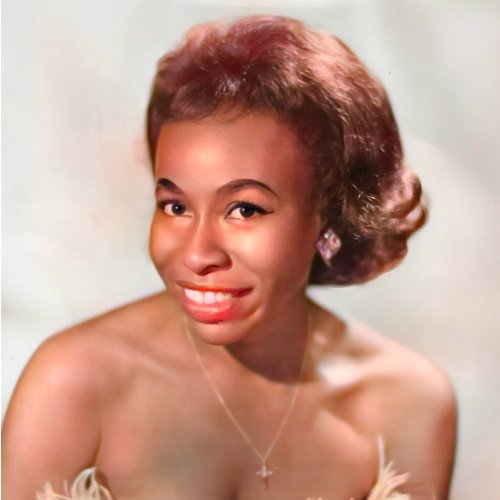
![Dave Holland - Emerald Tears (1977/2025) [Hi-Res] Dave Holland - Emerald Tears (1977/2025) [Hi-Res]](https://www.dibpic.com/uploads/posts/2025-12/1765891427_cover.jpg)
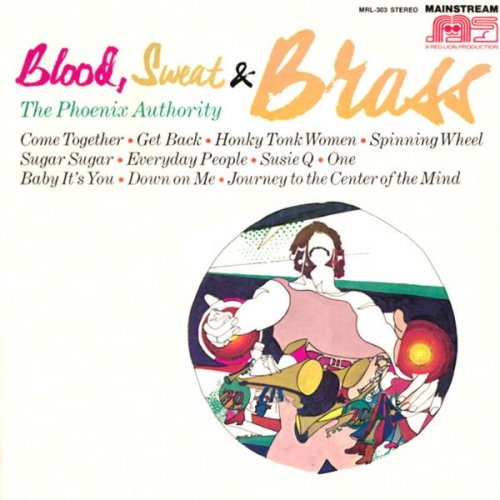
![Eshon Burgundy - Safe Place (Bossa Nova Jazz) (2025) [Hi-Res] Eshon Burgundy - Safe Place (Bossa Nova Jazz) (2025) [Hi-Res]](https://www.dibpic.com/uploads/posts/2025-12/1766079194_cover.jpg)
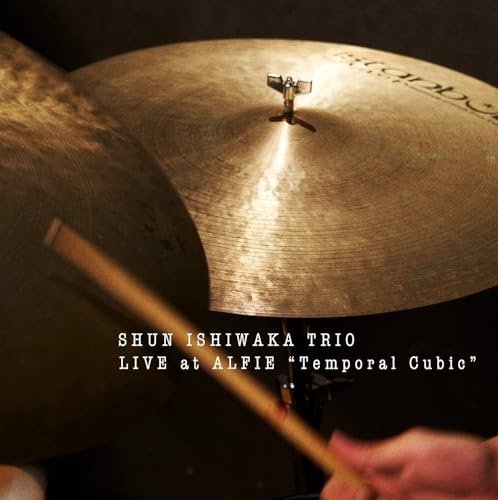
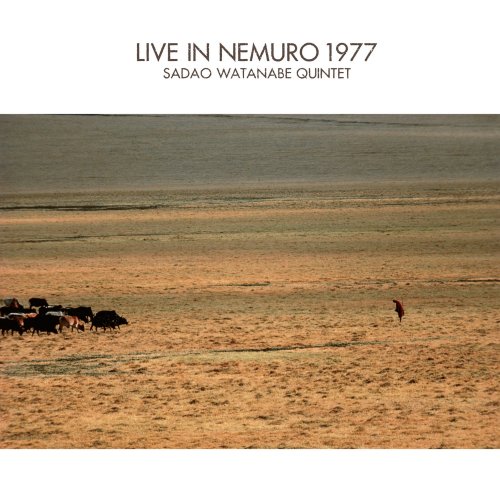

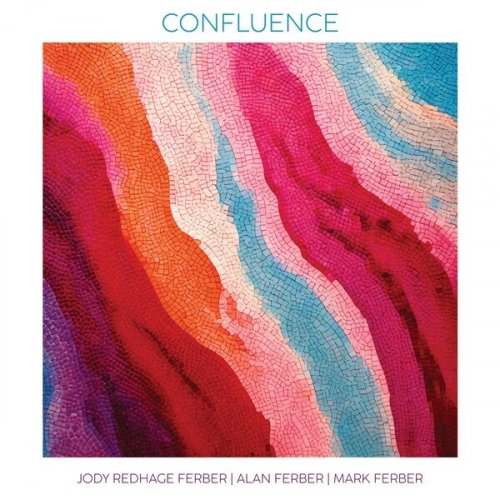
![Rachel Kitchlew, SFJ - Flirty Ghost (2025) [Hi-Res] Rachel Kitchlew, SFJ - Flirty Ghost (2025) [Hi-Res]](https://www.dibpic.com/uploads/posts/2025-12/1765896408_qvf41hr1ljj8a_600.jpg)